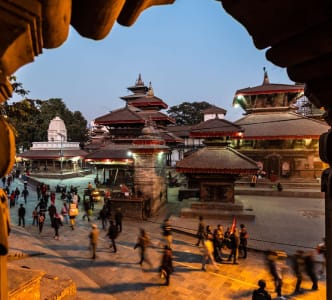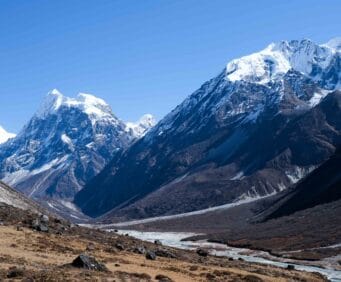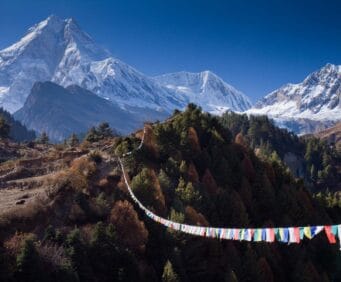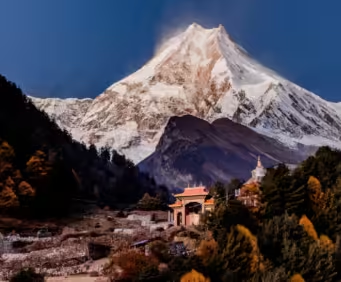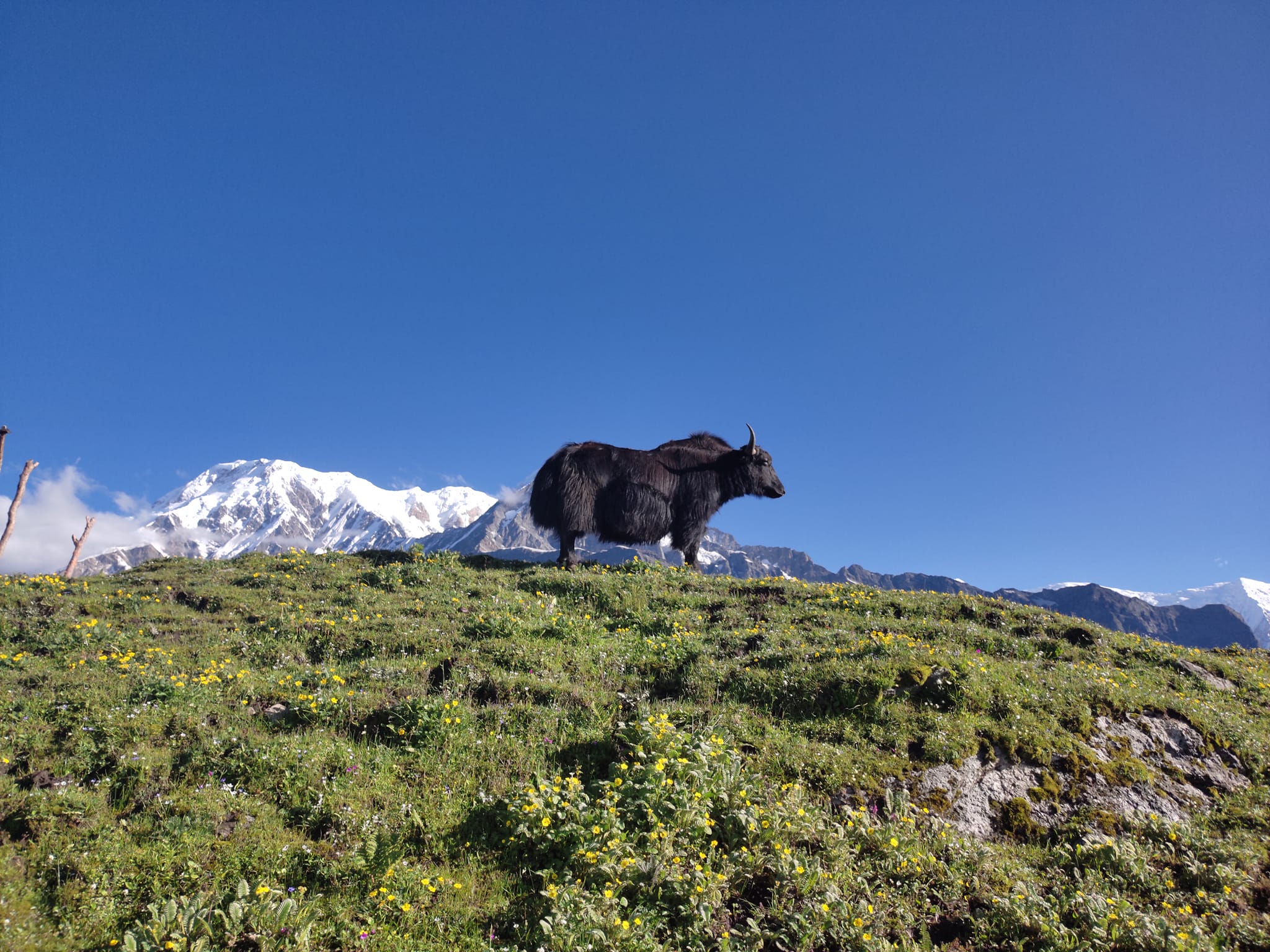
Mardi Himal Trekking Season and Weather Information
21st October, 2024 - Posted By: Himalayan AbodeThe Mardi Himal Trekking is one of the most beautiful trips that doesn’t attract crowds and offers a serene treat for trekkers. It lies at the base camp of the Annapurna Massif. This comparatively short and comparatively little-used trail has gradually been assuming greater importance as a tourist route, especially for enthusiasts of the adventurous, naturalistic, or genuinely tactile sense of those vast Himalayan ranges. Suppose you are dreaming of beautiful snowy mountains, colorful rhododendron trees, and impressive local hospitality. In that case, Mardi Himal Trek is waiting for you with a deep desire to provide you with a memorable trekking experience. Here you can explore more about the Mardi Himal trekking season and weather.
Tour through the Unexplored Region
The trek to the Mardi Himal begins in Kande or Phedi which is around 30 minutes drive from the city of Pokhara. This trek is suitable for new as well as experienced trekkers who are searching for a moderate level of trek.
Sights en route include picturesque villages, crops terrains and dense oak, maple, and rhododendron forests often providing the first view of some of the major peaks of the Annapurna and Dhaulagiri ranges including Annapurna South, Machhapuchhre, Hiunchuli etc, to mention few.
Another interesting part of the trek is the climb through the rhododendrons forest. In spring there are flowers of red, pink and white colors giving the scenery in and around a fairy like touch. As you progress further upwards, instead of dense forests, you get the alpine meadows and the mountains themselves are now visible clearly. The landscape is deserted and stunning; thus, the ride is calming by default.
It was exciting to reach the Mardi Himal Base Camp. The trek takes you to Mardi Himal Base Camp with an altitude of 4,500m (14,800 feet).
Mardi Himal Trek also allows you to explore one of the most beautiful and enclosed Annapurna region Trekking – Mardi Himal is situated in the confines of the Annapurna mountain range and is classified as a restricted area trek. This is where the magi truly happens.
The base camp offers spectacular vantage of some of the formidable mountains in the Himalayas; Annapurna I; Dhaulagiri and Machhapuchhre. The views of the rising and setting sun from this location are striking in the way that the first and last light falls on the white mountaintops.
Unlike the busier trekking routes, Mardi Himal Base Camp is still virgin to mass tourism hence giving trekkers alone time with the tranquility and the beauty of the environment. That is why it is suitable for photography, meditation, and isolation or immersion into an ocean of stunning views.
Living Local Culture and Warmth
Another interesting thing about the Mardi Himal Trek is the fact that trekkers such a chance to embrace the Greg and Magar culture. During the trekking, trekkers cross primitive mountain communities whose people welcome the trekkers with open arms.
In our destination, apart from sleeping in local teahouses, we will be able to communicate with the local people and taste Nepali dishes. Due to its uncomplicated way of living, beautiful mountains, and scenery, cultural enhancement is guaranteed in these villages.
A Trek for All Seasons
Mardi Himal Trek is available whole year round but it is safer to go between March to May and September to November months. The months of the year when the temperature of the region is relatively low and there is little to no humidity, therefore visibility is also high and the overall outlook is breathtaking. Spring has the benefit of blooming Rhododendrons while autumn has fresh cool air and well a clear view of mountains.
But for those who dream of winter tourism, it is still possible to do the Mardi Himal trek in the cold season, if not for the snow and low temperatures at higher altitudes.
Why Choose Mardi Himal Trek?
- Less Crowded: Mardi Hima is relatively less crowded than Annapurna Base camp and EBC Treks also is one of the beautiful Treks.
- Moderate Difficulty: With moderate difficulty, the trek can be accomplished in 5-7 days making it perfect for those that do not have much time at their disposal.
- Unbeatable Views: The principal peaks of the area include Annapurna, Dhaulagiri and the beautiful Machhapuchhare including the stunning views of the mountain ranges all around during the trek.
- Rich Cultural Experience: The trek offers an opportunity to be culturally encountered with the peoples of Gurungs and Magars.
Trekking season of Mardi Himal and information on the weather
The best time to visit Mardi Himal Trek is all year round but it is preferable when the weather is right, the trail is clear and the visibility of Mountain views is clear. It is really important to know what kind of climate attendees can expect during different days of a trek in Vermont because the climate there has its special peculiarities, being seasonal for the most part.
1. Spring Season (March to May)
Weather:
If planning to trek Mardi Himal, spring is ideal since the weather is moderate and a little warm. Daytime at low altitudes is from 10°C to 20°C (50°F to 68°F) but is cooler at night, without being too cold. At higher altitudes, when the sun sets, the temperature goes as low as 0°C (32°F).
Highlights:
This season is particularly colorful due to the rhododendrons that surround the trekking trail during the season. There is beauty in the hills because the hills are full of red, pink, and white flowers. Less humidity, fewer clouds, and moderate temperature are a perfect combination for trekking that gives a perfect view of the Annapurna range, Machhapuchhre, and Hiunchuli.
Best for: Hunters and others who want to see those beautiful forests in full bloom.
2. The autumn season is from September to November
Weather:
Another major trekking season is autumn when the weather is also quite favorable with lots of clear skies and visibility. During the day, the temperature oscillates from a minimum of 10°C/50°F to a maximum of 18°C/64°F for the sites near sea level, while nighttime temperatures may go as low as – 5°C/23°F for the higher sites.
Highlights:
From what understand it is usually clear after the monsoons adding to the beautiful views of snowy mountains. These trails are dry and free from dust and other trekking obstacles thus making trekking easy. This season involves a large number of trekkers because of the good weather and beautiful terrains of mountains.
Best for: Travelers, hikers looking for a better view of the mountains, and people who prefer trekking in cooler climates.
3. Winter Season: – December to February
Weather:
Winter is a colder season and this is truer if one lives a little higher in altitude. Daytime temperatures on the bottom part of the mountain range is at about 5 degrees Celsius to 10 degrees Celsius, and night temperatures drop to as low as the freezing point at higher altitudes, which is usually about -15 degrees Celsius which is equivalent to 5 degrees Fahrenheit.
Highlights:
Winter trekking is almost the same as other seasons but the specialty of winter trekking is that it is isolated, where not many trekkers go there. From a visitor’s perspective, the snow makes it beautiful with wonderful sceneries and the uncluttered winter skies offer the best views of the terrain. However, having snow on the higher grounds may make the trek a little more difficult.
Best for Climbers who are willing to hike in cold conditions /for those who like solitude
4. Monsoon: June to August
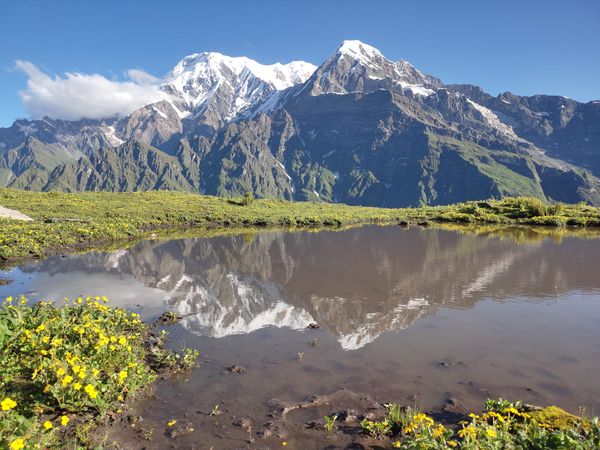
Weather:
Rain and humidity are characteristic signs of the monsoon season. The daytime temperature as it gets to mid or high altitude varies between 15- 25 °C/59 – 77°F although this is accompanied by high moisture and rainfall hence difficult for trekking. Some trails may be slippery especially when it rains and the forest is home to leeches. The billowy clouds cover the mountains in most instances at this time.
Highlights:
But trekking in the monsoon has its difficulties, but the trekking trails are green and beautiful and the waterfalls are powerful. For the people, who do not have a problem with the wet conditions, trekking in monsoon means a chance to enjoy the greenery of Annapurna.
Best for: Advanced users who do not plan to trek with a group and are okay with their shoes getting wet.
Summary of Best Seasons
- Best Time to Trek: The perfect Mardi Himal trekking seasons are spring (from March to May) and autumn (from September to November) due to the prevailing good climate situation and clear sky conditions on the trek trail.
- Challenging Conditions: The winter months within this season are December, January, and February, which make possible for solitude and snowy scenery; however, the weather is rather freezing. The rainy season (June to August) gives a beautiful view because of the vegetation but arrival causes disturbance in the trail.
- Mardi Himal trek is possible all year through, though trekkers find every season unique in its experience and beauty so it just remains to one’s preference where he /she would wish to find them.
Recent Posts
